Severe storms are Michigan's 'new normal' and our infrastructure can't take it
Violent thunderstorms with high winds and heavy rains left large portions of southeast Michigan flooded, highways impassible and hundreds of thousands without power. In August 2014. And September 2016. And July 2021. And September 2021. And twice last week.
"Apparently, these storms have become our new normal," said Macomb County Public Works Commissioner Candice Miller.
Severe storms are becoming more frequent in Michigan, and more severe when they happen. U.S. annual precipitation increased 4% between 1901 and 2015, but the Great Lakes region saw an almost 10% increase over that interval.
Heavy rains are getting heavier as well. Researchers looked at the top 1% of rainfall events, based on the amount of rain that fell within a 24-hour period, and found that the amount of rain falling in those heavy events has increased 42% in the Midwest since the 1950s. Only the northeastern U.S. had a more pronounced increase, at 55%.
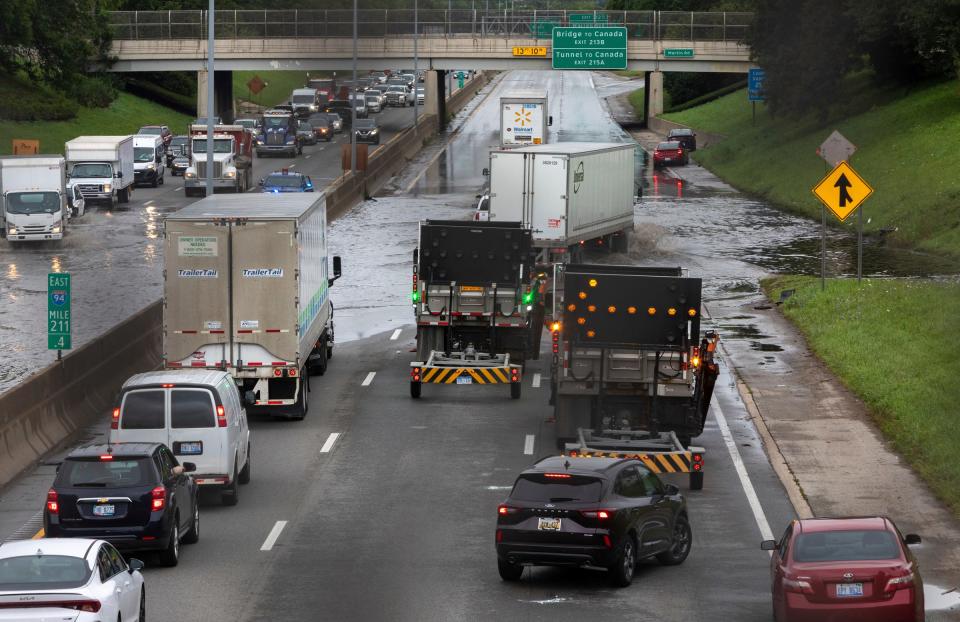
Work is needed, desperately, but the storms are too powerful
Most of southeast Michigan's stormwater conveyance systems were built around the end of World War II or even earlier, designed for far milder precipitation totals, said Kelly Karll, manager of the environment and infrastructure group at the Southeast Michigan Council of Governments, a regional planning organization.
"The bottom line is, as we've been saying for years, our stormwater infrastructure needs are in a dire situation," she said.
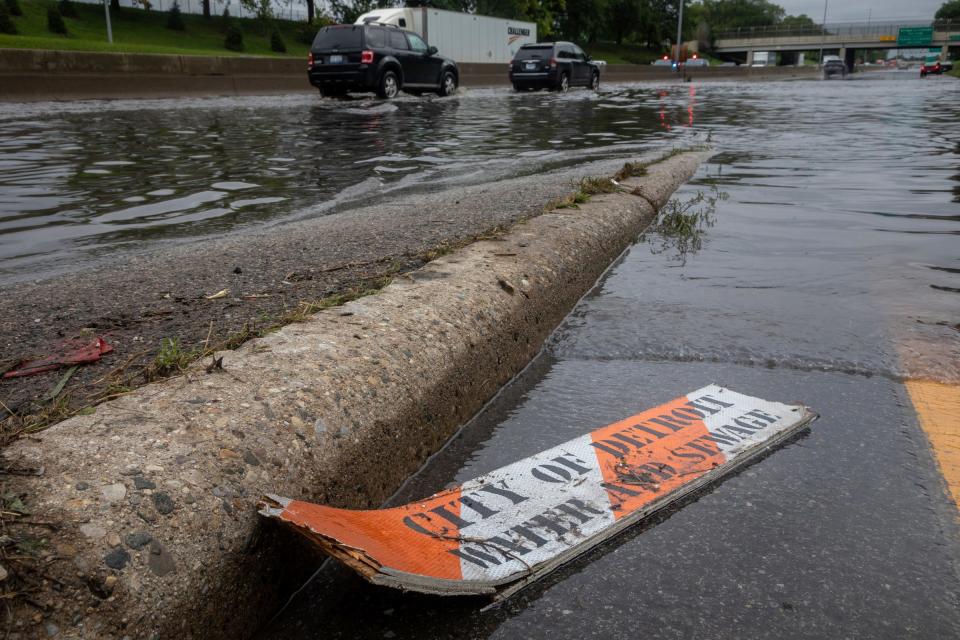
But Karll wants to be clear: No amount of infrastructure improvement could be reasonably accomplished that can handle more than 7 inches of rain in a couple of hours, as occurred in Rockwood and Belleville last week.
"That might be on a 500-year storm level," she said. "We are not going to build our way out of that — when we get 7 inches of rain over a few hours, we are still going to get these kinds of flood events happening."
'100-year' storms every few years
The severe storms that are becoming fairly common overwhelm road grates, stormwater pipes and retention basins, where necessary infrastructure changes are almost unavoidable.
"Our 100-year event of today is 4.5 inches of precipitation over 24 hours," Karll said. "That means there should be a 1% chance of that occurring in any single year in a 100-year period.
"Well, we can count four or five on our hand that have occurred in just the past few years."
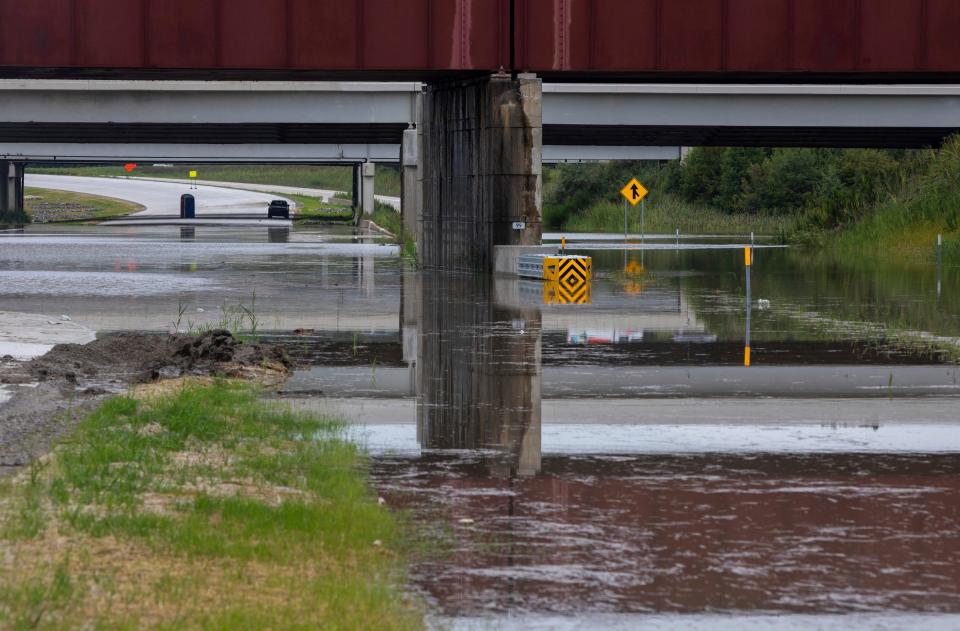
SEMCOG and the Michigan Department of Transportation in 2020 commissioned Detroit-based Tetra Tech for a study on southeast Michigan's current and future precipitation. Studying the consensus of six different regional climate models, projections show what's currently considered a 100-year storm will be more like a 10-year storm by midcentury.
When heavy rains overwhelm stormwater systems, it's a particular problem in southeast Michigan, as many of those pipes also handle sewage flows. Combined sewage overflows get some limited treatment in retention basins before discharge, and they meet state water quality standards to protect public health. Sanitary sewage overflows, however, send raw sewage to the Lake Huron-Detroit River-Lake Erie corridor — the drinking water source for 4 million people in southeast Michigan.
Though communities and the Great Lakes Water Authority are still assessing the impacts of this week's storms, many are reporting combined and sanitary sewage overflows that will total in the tens of millions of gallons.
"It's not just the sewage; it's oil and grease coming off the pavement; it's fertilizers and pesticides off of lawns, all commingled," Karll said. "It's not good water to recreate in."
Updated precipitation modeling in draft Climate Change Plan
The Michigan Department of Environment, Great Lakes and Energy recognizes the issues.
"We are working across the state and in southeast Michigan to find ways to update the collection systems due to climate change," said Phil Argiroff, an assistant director in EGLE's Water Resources Division.
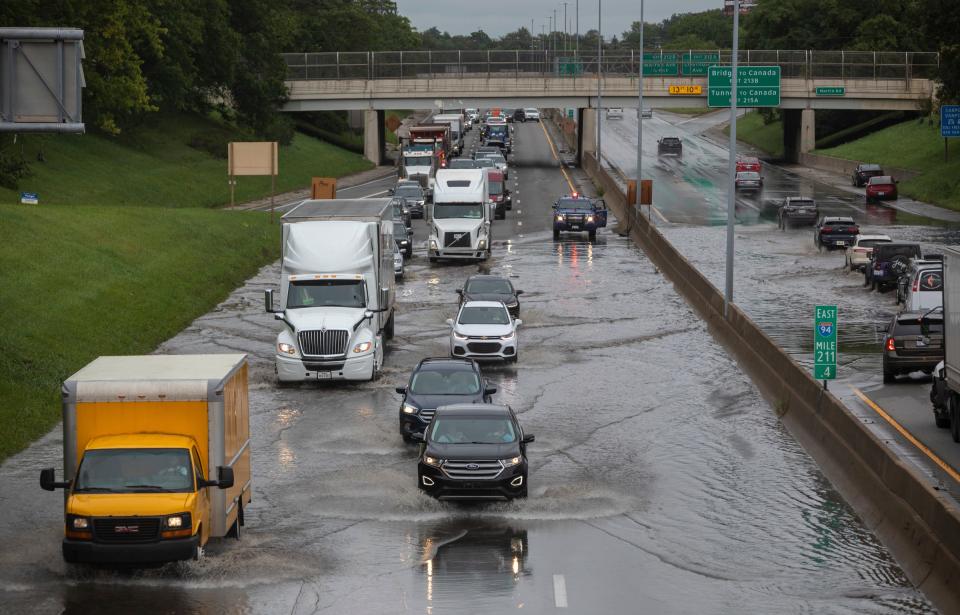
"As we all can see, the intensity and frequency of storm events are changing and this has real world impacts on water quality, basement backups and public health."
The division has opened up for public comment a draft Climate Change Plan that would, among other things, require new stormwater infrastructure to use the latest precipitation modeling. Gov. Gretchen Whitmer's 2022 budget also included $66 million for backup generators for stormwater pumping stations along 164 state-owned highways — a long-standing problem as the storms that bring flooding also often knock out power.
Price tag: $1 billion per year
SEMCOG earlier this year unveiled a GREEN coalition, Growing our Resilience, Equity and Economy with Nature. It hopes to foster climate resilience and flood management by going back to natural processes — installing more tree canopies, reintroducing wetlands and natural areas to slow and clean stormwater that currently races across hundreds of square miles of paved, hard surfaces in the watershed.
"There's definitely some great work occurring all around the region on this," SEMCOG spokesman Trevor Layton said. "Every storm is a good reminder to keep committed to it."
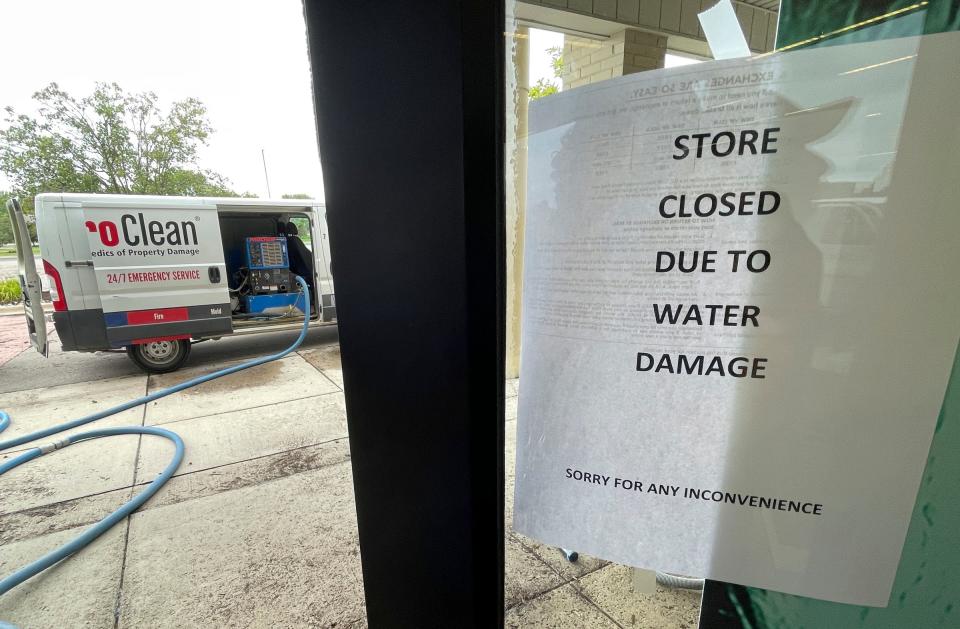
Recent COVID-19-era influxes of infrastructure money from the federal government have certainly helped, Karll said. But "we need over $1 billion a year to upgrade these systems," she said.
"Much of that federal funding influx was in the form of loans, and there are many disadvantaged communities that can't afford to pay back the loans," Karll said.
Unlike drinking water and sewer systems, stormwater does not have a dedicated funding source in most places in Michigan. Communities are left to seek occasional grant and loan programs to do the high-priced work that's already overdue.

"Michigan has kind of fallen behind other states that have created stormwater utilities," said Ron Brenke, executive director of the American Council of Engineering Companies of Michigan.
Wisconsin, Ohio and Indiana all have more than 100 communities with stormwater utilities to fund capital improvements and ongoing maintenance. "Michigan has fewer than 10," he said.
"It's one thing that I think Michigan needs to advance," Brenke said. "This has been introduced in the past and tends to not go anywhere. I hope these recurring flooding events serve to move Lansing to action."
Contact Keith Matheny: kmatheny@freepress.com.
This article originally appeared on Detroit Free Press: Flooding — again — shows inadequacies in region's infrastructure

